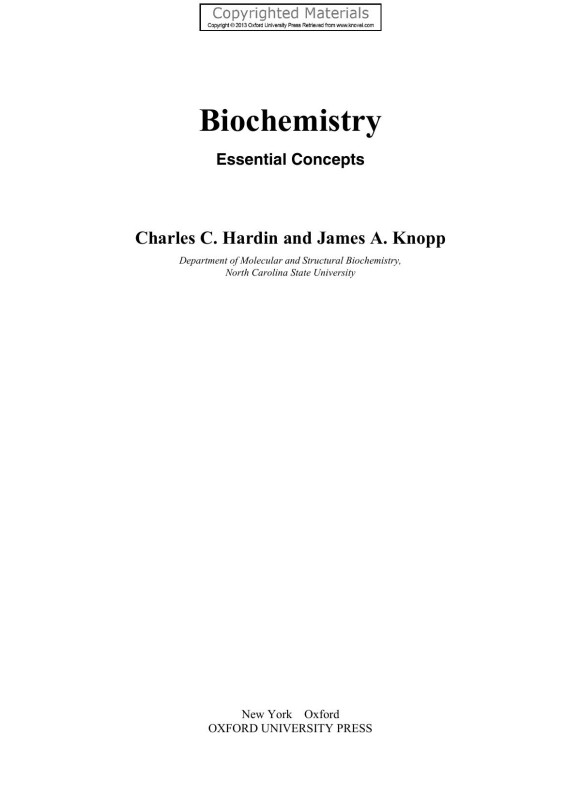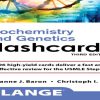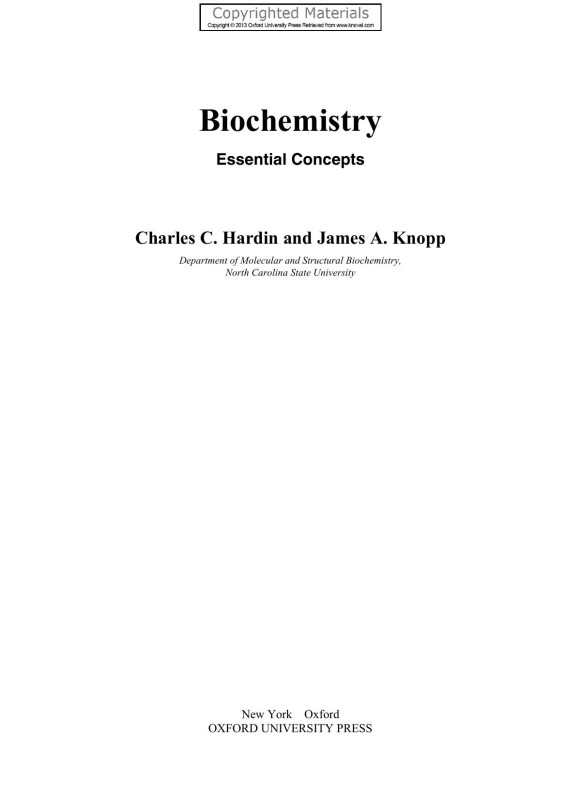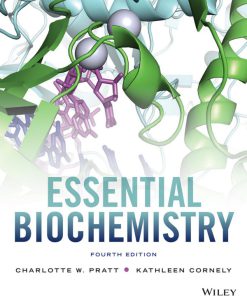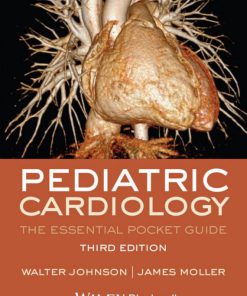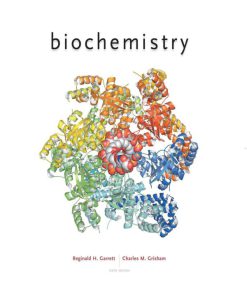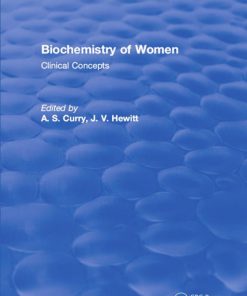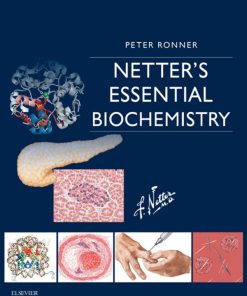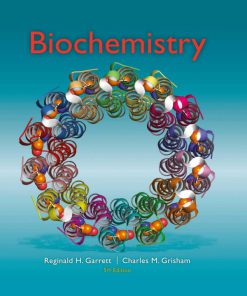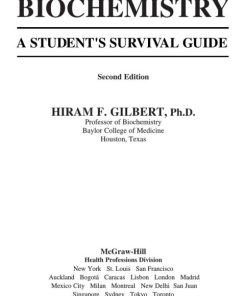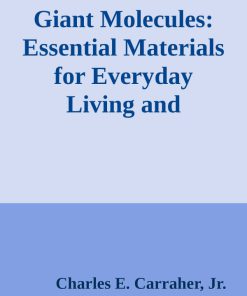Biochemistry Essential Concepts 1st Edition by Charles Hardin, James Knopp ISBN 0199765626 9780199765621
$50.00 Original price was: $50.00.$25.00Current price is: $25.00.
Authors:Charles C. Hardin; James A. Knopp , Series:Biochemistry [158] , Author sort:Hardin, Charles C. & Knopp, James A. , Languages:Languages:eng , Publisher:Oxford University Press
Biochemistry: Essential Concepts 1st Edition by Charles C. Hardin, James A. Knopp – Ebook PDF Instant Download/Delivery. 0199765626, 978-0199765621
Full download Biochemistry: Essential Concepts 1st Edition after payment
Product details:
ISBN 10: 0199765626
ISBN 13: 978-0199765621
Author: Charles C. Hardin, James A. Knopp
Biochemistry: Essential Concepts 1st Edition:
One-semester biochemistry courses are notorious for overwhelming students with the magnitude of material covered in their texts and lectures. Biochemistry: Essential Concepts distills the basic ideas covered in a one-semester course without the extraneous details that burden most texts.
Authors Charles Hardin and James Knopp demonstrate the core concepts of biochemistry–including cell biology, amino acids, metabolism, and DNA–in a variety of real-world contexts. With the last forty percent of the text devoted to review questions and practice tests, Biochemistry: Essential Concepts equips students for success in the one-semester biochemistry course and prepares them for their future studies and careers.
Biochemistry: Essential Concepts 1st Edition Table of contents:
Chapter 1. Biochemistry: Subject Overview
1.1 Central Themes
1.2 Central Dogma of Molecular Biology
Chapter 2. Cell Biology Review
2.1 The Animal Cell
2.2 The Plant Cell
2.3 Selected Organelles
2.4 The Cell Cycle: Mitotic Cell Division
2.5 Viruses
Chapter 3. Chemistry Review
3.1 Organic Compounds
3.2 Chirality
3.3 Chemical Reactions
3.4 Physical Chemistry Concepts
3.5 Buffering of Blood: The Bicarbonate System
Chapter 4. Amino Acids
4.1 Basic Structures
4.2 Amino Acid ‘R Groups’
4.3 Ionization Properties
4.4 Drawing Peptide Titration Plots
4.5 Factors That Influence the pKa of Protonatable/Deprotonatable Groups in Proteins
Chapter 5. Proteins
5.1 Peptide Bonds
5.2 Purification and Characterization of Proteins
Chapter 6. Protein Structure
6.1 Conformation
6.2 Classification of Substructure
6.3 Alpha Helices
6.4 Beta Sheets
6.5 U-Turns
6.6 Ramachandran Plot
6.7 Stabilizing Factors
6.8 Thermodynamics of Protein Folding: The Hydrophobic Effect
6.8.1 Temperature-Dependent Denaturation
6.9 Chaotropes and the Hofmeister Series
6.10 Sodium Dodecyl Sulfate (SDS): Chaotrope Action
6.11 Visualizing the Energy Landscape
6.12 Protein Maturation
Chapter 7. Ligand Binding and Functional Control
7.1 Oxygen Transport in Blood
7.2 Hemoglobin Oxygen Binding: Cooperativity
7.3 Antibodies: Immunological Recognition
Chapter 8. Enzymes
8.1 Enzymes Are Biological Catalysts
8.2 Enzyme Function: Activity Assays and Enzyme Kinetics
8.3 Requirements for Catalysis
8.4 Comparing Enzymes and Relative Efficiency of Use of Substrates
8.5 Drug Design
8.6 Enzyme Inhibitors
8.7 Allosterism
8.8 Phosphorylation and Dephosphorylation
Chapter 9. Metabolic Enzyme Action
9.1 Enzyme Mechanisms
9.2 Modes of Catalysis
9.3 The Reaction Coordinate
9.4 Induced Fit Revisited
9.5 Acid-Base Catalysis
9.6 Covalent Group Transfer
9.7 The Serine Protease Catalytic Triad Mechanism
9.8 The Active Site of Tyrosyl-tRNA Synthetase
Chapter 10. Coenzymes
10.1 Classification
10.2 Survey of the Coenzymes
10.3 Metals
10.4. Carbohydrates-Based Cofactors
10.5 Fat Soluble Vitamins
Chapter 11. Carbohydrates and Glycoconjugates
11.1 Carbohydrates: Definition
11.2 Monosaccharides: Aldoses
11.3 Monosaccharides: Ketoses
11.4 Structural Features
11.5 Intramolecular Cyclization
11.6 Conformations: Sugar Puckers
11.7 Sugar Derivatives
11.8 Disaccharides
11.9 Polysaccharides
11.10 Carbohydrate-Protein Conjugates
11.11 Synthesis and Structural Characterization
Chapter 12. Lipids
12.1 Structural Overview
12.2 Saturated and Unsaturated Fatty Acids
12.3 Functions
12.4 Diacylglycerol Lipid Derivatives
12.5 Structural Motifs
12.6 Assembly
12.7 Structural and Dynamic Characterization
12.8 Eicosanoids
12.9 Phospholipases
12.10 Phosphoinositides
12.11 Steroids
12.12 A Potpourri of Lipids
Chapter 13. Membranes
13.1 The Fluid Mosaic Model
13.2 Detergents
13.3 Distribution of Lipids in Biological Membranes
13.4 The Hydropathicity Scale
13.5 Lipid-Anchored Membrane Proteins
13.6 The Erythrocyte Cytoskeleton
Chapter 14. Transport Through Membranes
14.1 The Transmembrane Potential
14.2 Active Transport
14.3 Ionophores
14.4 The Acetylcholine Receptor Ion Channel
14.5 Lactose Permease and Secondary Active Transport
14.6 Mechanism of Transport by Na+, K+ ATPase
14.7 Ion Channel Blockers
Chapter 15. Signal Transduction
15.1 Signaling Pathways: Hormones, GTPases, Second Messengers, and Intracellular Regulation
15.2 The Adenylate Cyclase Signaling Pathway
15.3 The Inositol-Phospholipid Signaling Pathway
15.4 Phorbol Myristyl Acetate
15.5 The Insulin Receptor
15.6 Glucagon
15.7 G-Proteins
Chapter 16. Nucleic Acids: DNA
16.1 DNA and RNA
16.2 Physical Properties
16.3 Secondary Structure
16.4 Backbone Structure
16.5 Counterions
16.6 Chemical Synthesis
16.7 Watson-Crick Base Pairs
16.8 Structural Modifications
16.9 Three-Dimensional Structures
16.10 Recognition of Sequences
16.11 Genetic Mutations and Antisense Nucleic Acids
16.12 Unusual DNA
16.13 Stabilization of Nucleic Acids
16.14 Secondary Structure Predictions
16.15 Chromosomes
16.16 Some Protein Nucleic Acid Binding Motifs
16.17 Recombination
Chapter 17. RNA
17.1 Cells Contain a Variety of Types of RNA
17.2 RNAs Have Stable Secondary Structure
17.3 Tertiary Structure: Transfer RNA
17.4 Messenger RNA (mRNA)
17.5 Eukaryotic Messenger RNA
17.6 Alkaline Hydrolysis of RNA
17.7 Small Interfering RNA
Chapter 18. Biotechnology
18.1 Restriction Endonucleases
18.2 Cloning in a Nutshell
18.3 DNA Preparation: Phenol-Chloroform Extraction
18.4 Polymerase Chain Reaction
18.5 Probe DNA
Chapter 19. Metabolism
19.1 Overview
19.2 Metabolic Pathway Types
19.3 Energy Conservation
19.4 Key Pathways/Reactions
Chapter 20. Bioenergetics
20.1 Reaction Equilibria: Standard and Actual Free Energies
20.2 Metabolically Irreversible and Near Equilibrium Reactions
20.3 Energies and Regulation of Glycolysis
Chapter 21. Bioelectrochemistry
21.1 Redox Reaction Principles
21.2 Redox Energetics: The Nernst Equation
21.3 Electron Transport Chains
Chapter 22. Glycolysis
22.1 Reactions 1 through 10
22.2 Regulation: Activation and Inhibition
22.3 Four Fates of Pyruvate
Chapter 23. The Krebs Cycle
23.1 Pathway
23.2 Reactions
23.3 Yields
23.4 Cellular Redox Potential
23.5 Regulation
Chapter 24. Gluconeogenesis
24.1 Reactions
24.2 Regulation
24.3 Sources Used to Produce Glucose
Chapter 25. Electron Transport and Oxidative Phosphorylation
25.1 Mitochondria in Red and White Muscle
25.2 Overall Process
25.3 Chemical and Potential Energies That Drive Proton Transport
25.4 Mitochondrial Electron Transport
25.5 Electron Transfer and Proton Flow in Complexes I through IV
25.6 Oxidative Phosphorylation
Chapter 26. The Malate-Aspartate Shuttle and Proteomics
26.1 Getting NADH into the Mitochondrion: Isozymes
26.2 Isozymes and Proteomics
26.3 Characterization by Two-dimensional Gel Electrophoresis
26.4 Mass Spectrometry and Proteomics
Chapter 27. Degradation and Synthesis of Lipids
27.1 Beta Oxidation of Saturated Fatty Acids
27.2 Biosynthesis of Fatty Acids
27.3 Length Determination of Fatty Acids
27.4 Synthesis of Acidic Phospholipids
27.5 Cholesterol Biosynthesis
27.6 Regulating Cholesterol Levels
Chapter 28. Photosynthesis
28.1 Light and Dark Reactions
28.2 Photo-Gathering Pigments
28.3 Photosynthetic Electron Transport Pathway (Z Scheme)
Chapter 29. The Calvin Cycle
29.1 The Dark Reactions: Carbon Fixation
29.2 Biosynthesis of Ribose-5-phosphate
29.3 RuBisCO Mechanism
29.4 The C4 and CAM Pathways
Chapter 30. The Urea Cycle
30.1 Purpose and Reactions
30.2 Regulation
30.3 Comparative Nitrogen Excretion
30.4 Protein Degradation and Programmed Cell Death
People also search for Biochemistry: Essential Concepts 1st Edition:
what are the principles of biochemistry
basic concepts of clinical biochemistry
what are the topics under biochemistry
biochemistry essential questions
biochemistry essential amino acids
You may also like…
eBook PDF
Biochemistry 6th Edition by Reginald Garrett, Charles Grisham ISBN 1305886895 9781305886896
eBook EPUB
Netter’s Essential Biochemistry 1st Edition by Peter Ronner ISBN 0323388744 9780323388740
eBook PDF
Biochemistry 5th Edition by Garrett Reginald, Charles Grisham ISBN 1133106293 9781133106296

